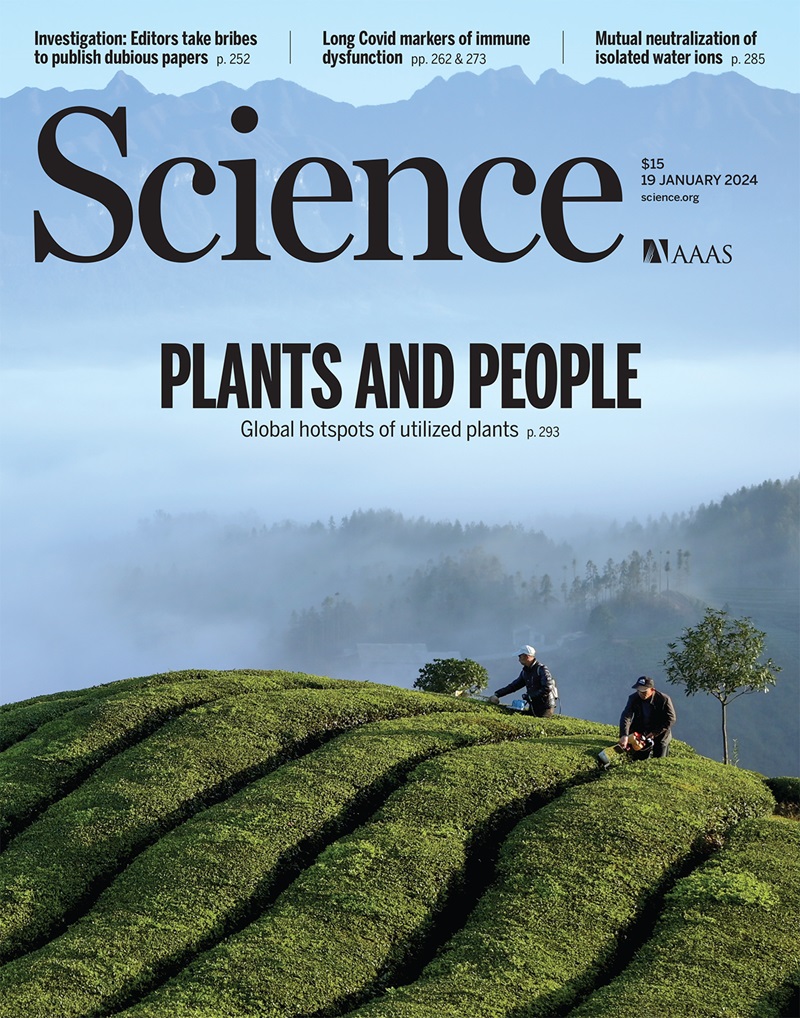外安纳托利亚:爱琴海新石器时代扩张期间文化和基因的相互作用
IF 45.8
1区 综合性期刊
Q1 MULTIDISCIPLINARY SCIENCES
引用次数: 0
摘要
西安纳托利亚在新石器时代从新月沃地向欧洲扩张的过程中一直是一个至关重要但又难以捉摸的因素。在这项工作中,我们使用30个新的古基因组描述了全新世早期西安纳托利亚不断变化的遗传和文化景观。我们表明,西安纳托利亚的新石器时代是一个多方面的过程,其特点是当地采集者对新石器时代习俗的同化,东部人口的涌入,以及他们的混合,他们的后代随后建立了新石器时代的东南欧。然后,我们使用58个物质文化元素共同分析了全新世早期安纳托利亚和爱琴海新石器时代村庄的遗传和文化相似性。在控制地理因素后,村落间的文化距离与村落间的空间距离相关,而与村落间的遗传距离无关。这表明,文化变化往往与基因上可见的流动性脱钩。本文章由计算机程序翻译,如有差异,请以英文原文为准。

Out-of-Anatolia: Cultural and genetic interactions during the Neolithic expansion in the Aegean
West Anatolia has been a crucial yet elusive element in the Neolithic expansion from the Fertile Crescent to Europe. In this work, we describe the changing genetic and cultural landscapes of early Holocene West Anatolia using 30 new paleogenomes. We show that Neolithization in West Anatolia was a multifaceted process, characterized by the assimilation of Neolithic practices by local foragers, the influx of eastern populations, and their admixture, with their descendants subsequently establishing Neolithic Southeast Europe. We then coanalyzed genetic and cultural similarities across early Holocene Anatolian and Aegean Neolithic villages using 58 material culture elements. Cultural distances among villages correlate with their spatial distances but not with their genetic distances after controlling for geography. This suggests that cultural change was often decoupled from genetically visible mobility.
求助全文
通过发布文献求助,成功后即可免费获取论文全文。
去求助
来源期刊

Science
综合性期刊-综合性期刊
CiteScore
61.10
自引率
0.90%
发文量
0
审稿时长
2.1 months
期刊介绍:
Science is a leading outlet for scientific news, commentary, and cutting-edge research. Through its print and online incarnations, Science reaches an estimated worldwide readership of more than one million. Science’s authorship is global too, and its articles consistently rank among the world's most cited research.
Science serves as a forum for discussion of important issues related to the advancement of science by publishing material on which a consensus has been reached as well as including the presentation of minority or conflicting points of view. Accordingly, all articles published in Science—including editorials, news and comment, and book reviews—are signed and reflect the individual views of the authors and not official points of view adopted by AAAS or the institutions with which the authors are affiliated.
Science seeks to publish those papers that are most influential in their fields or across fields and that will significantly advance scientific understanding. Selected papers should present novel and broadly important data, syntheses, or concepts. They should merit recognition by the wider scientific community and general public provided by publication in Science, beyond that provided by specialty journals. Science welcomes submissions from all fields of science and from any source. The editors are committed to the prompt evaluation and publication of submitted papers while upholding high standards that support reproducibility of published research. Science is published weekly; selected papers are published online ahead of print.
 求助内容:
求助内容: 应助结果提醒方式:
应助结果提醒方式:


